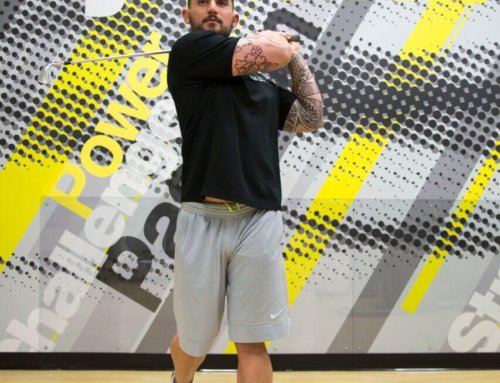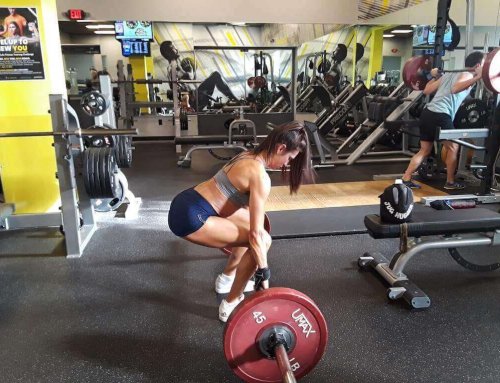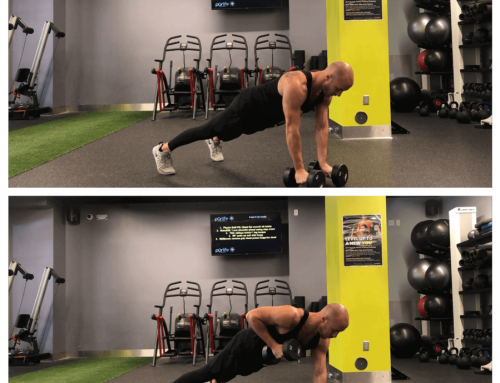Article by: Eric Heger, Purlife Personal Trainer NASM-CPT
“Life is really simple, but we insist on making it complicated.” – Confucius
Every day we seem to be bombarded with a new way to train the abdominals and core. With all the new equipment and techniques available, it’s time to return back to the basics, the plank. Crunches and sit-ups have been shown to over time, actually, damage the back as opposed to strengthen the core. All you really need to have a strong, healthy core is right below you. The floor.
Benefits of Planks
The plank isn’t just great for the core. It should be looked at and trained as a full body exercise. When performing a proper plank, the glutes, quads, hamstrings, abs, shoulders, scapula, even your ankles, and feet are all engaged and challenged.
The plank also helps to protect the spine from injury. Your spine is only as strong as the muscles surrounding it. This injury prevention also helps to improve posture.
Plank Variations
Planks are a great everyday exercise that can be performed anywhere. There is no fancy equipment. All you need is the ground and a comfortable surface for your elbows and forearms.
1) Forearm Plank
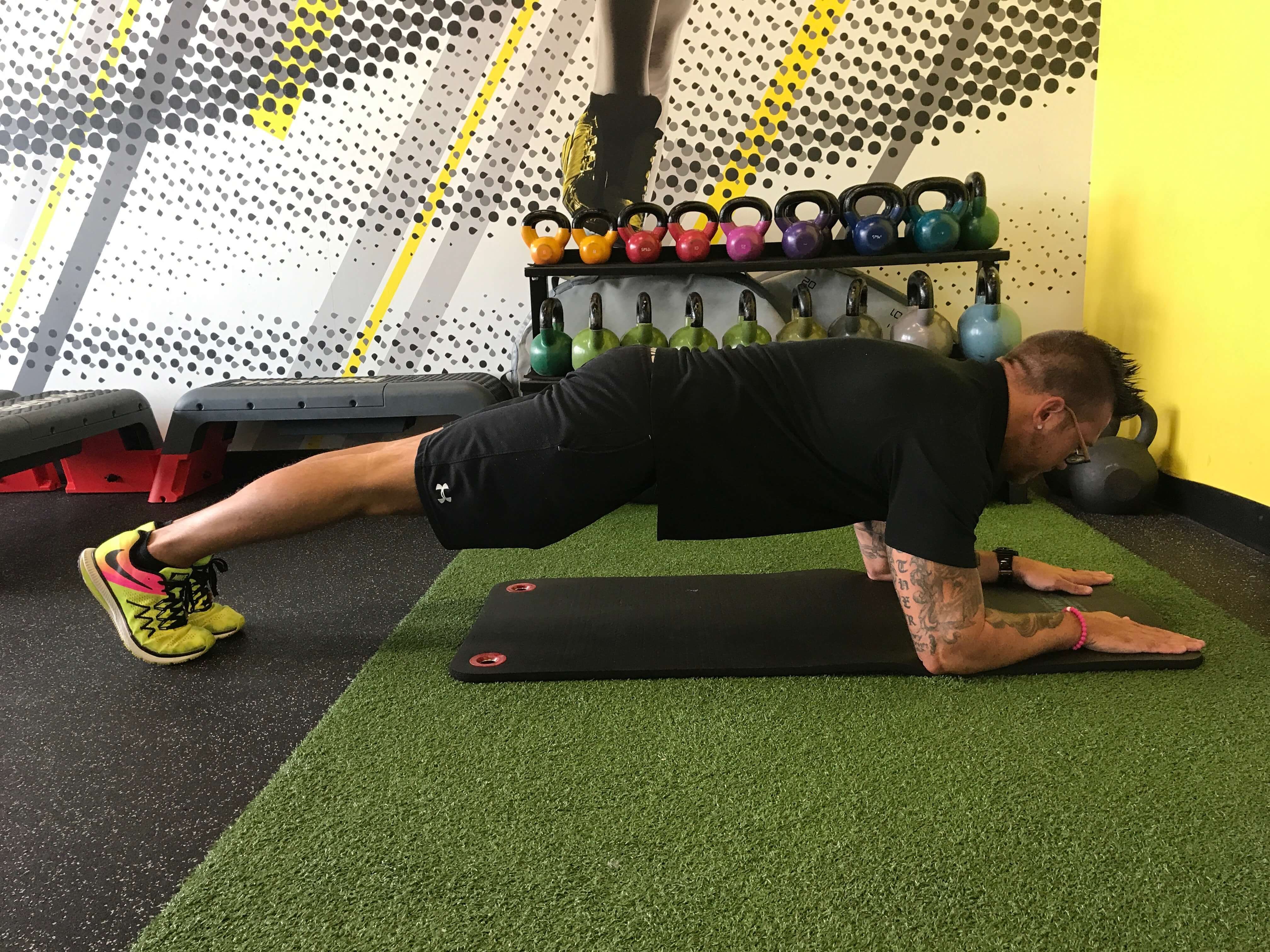 Choose an adequate surface. You’ll be in the prone position, forearms firmly ground, hands flat, on the tips of your toes. Start with a plank of 30 seconds or less and maintain strict form. Your progress you will be reflected in increasing time while your form stays consistent.
Choose an adequate surface. You’ll be in the prone position, forearms firmly ground, hands flat, on the tips of your toes. Start with a plank of 30 seconds or less and maintain strict form. Your progress you will be reflected in increasing time while your form stays consistent.
*Trainer Tip* “Imagine that there is a glass rod going from head to toe. You do not want to break that rod”.
Aim for a specific time that you can hold the plank. Gradually increase the time as you become stronger.
2) Side Plank
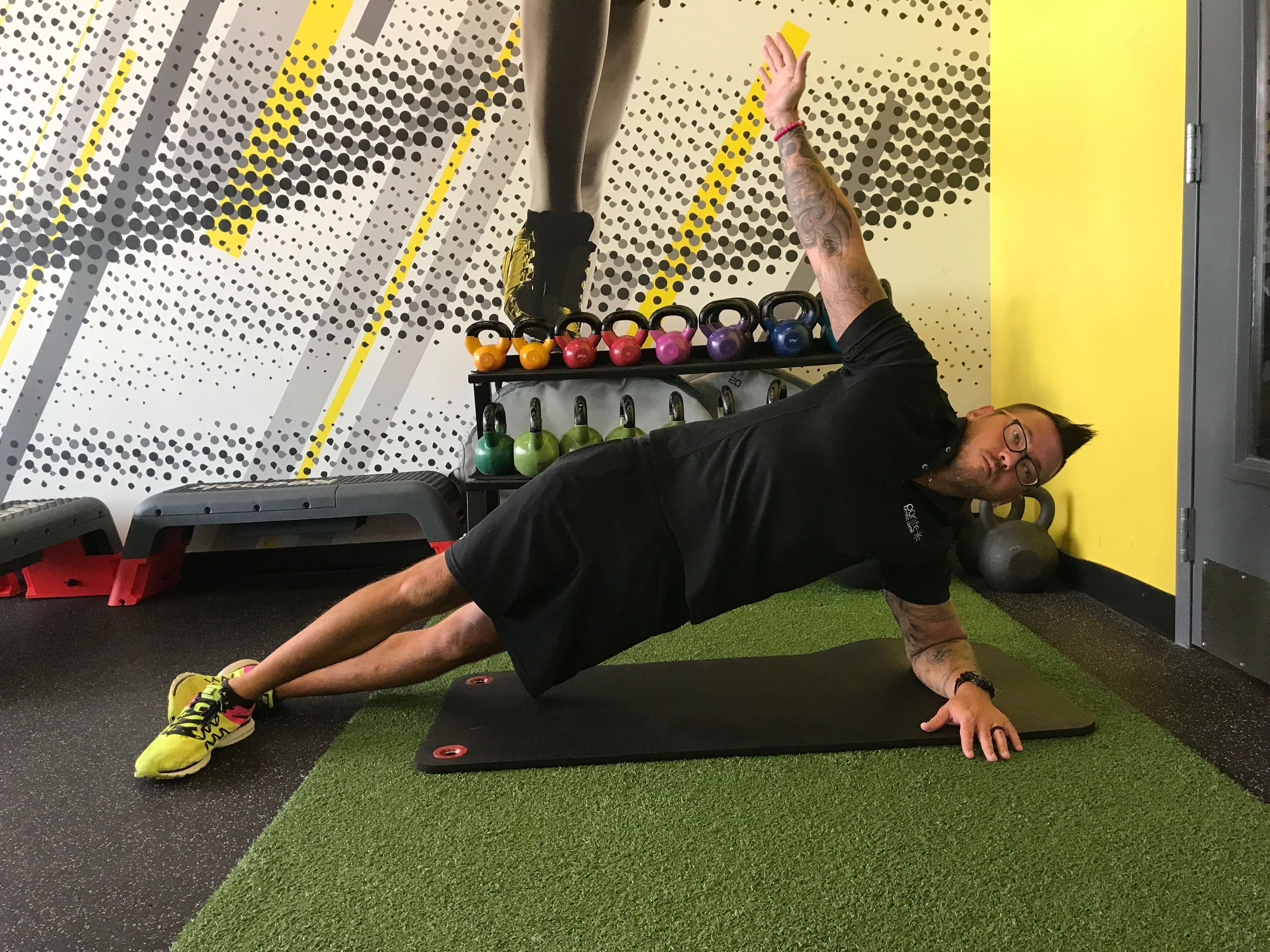 Start by laying on your side. Begin with staggered feet (you can always stack them to make it more difficult). Position the arm closest to the floor perpendicular to your body. Raise your hips to the ceiling. Even though you are on your side, there should still be a straight line going from your head down your spine into your feet.
Start by laying on your side. Begin with staggered feet (you can always stack them to make it more difficult). Position the arm closest to the floor perpendicular to your body. Raise your hips to the ceiling. Even though you are on your side, there should still be a straight line going from your head down your spine into your feet.
*Trainer Tip* “Imagine driving your top hip through the ceiling.”
Your forearm is what grounds you during the side plank. Ensure that your shoulder, elbow, and forearm are at 90 degrees.
3) Walking Plank
As the name implies, you literally walk up from a forearm plank to a straight arm plank. Control your body and do not let yourself come crashing down onto your forearms. Create a count or tempo in your head to help control the movement.
Start in a forearm plank. Walk up to a straight arm plank by shifting your weight from one arm to the other and lifting yourself up. Slowly lower yourself by shifting your weight back to one arm and ending back in a forearm plank.
*Trainer Tip* “From the straight arm plank, slightly shift your weight to the hand that is planted on the ground.”
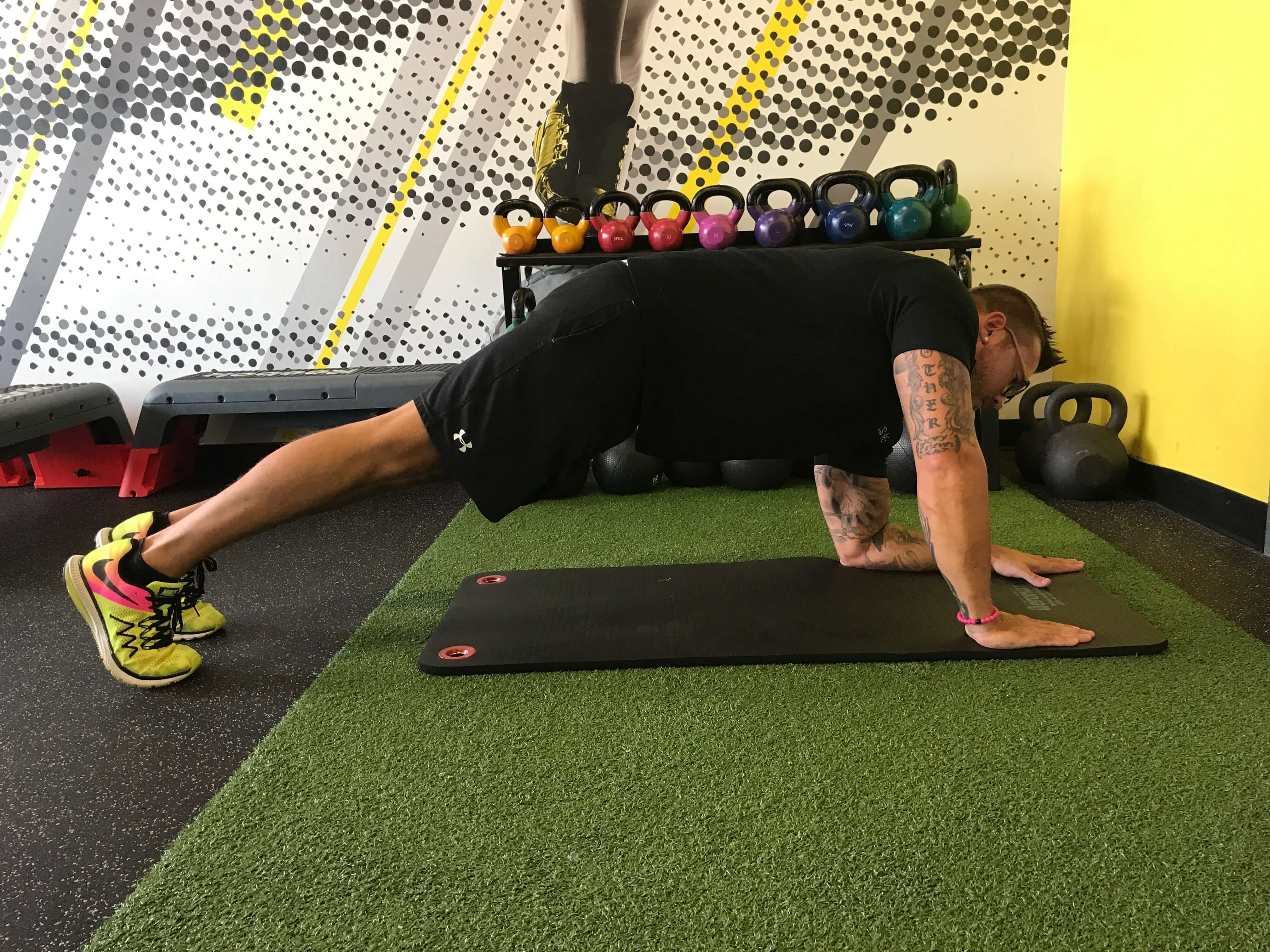
Walking Plank 1
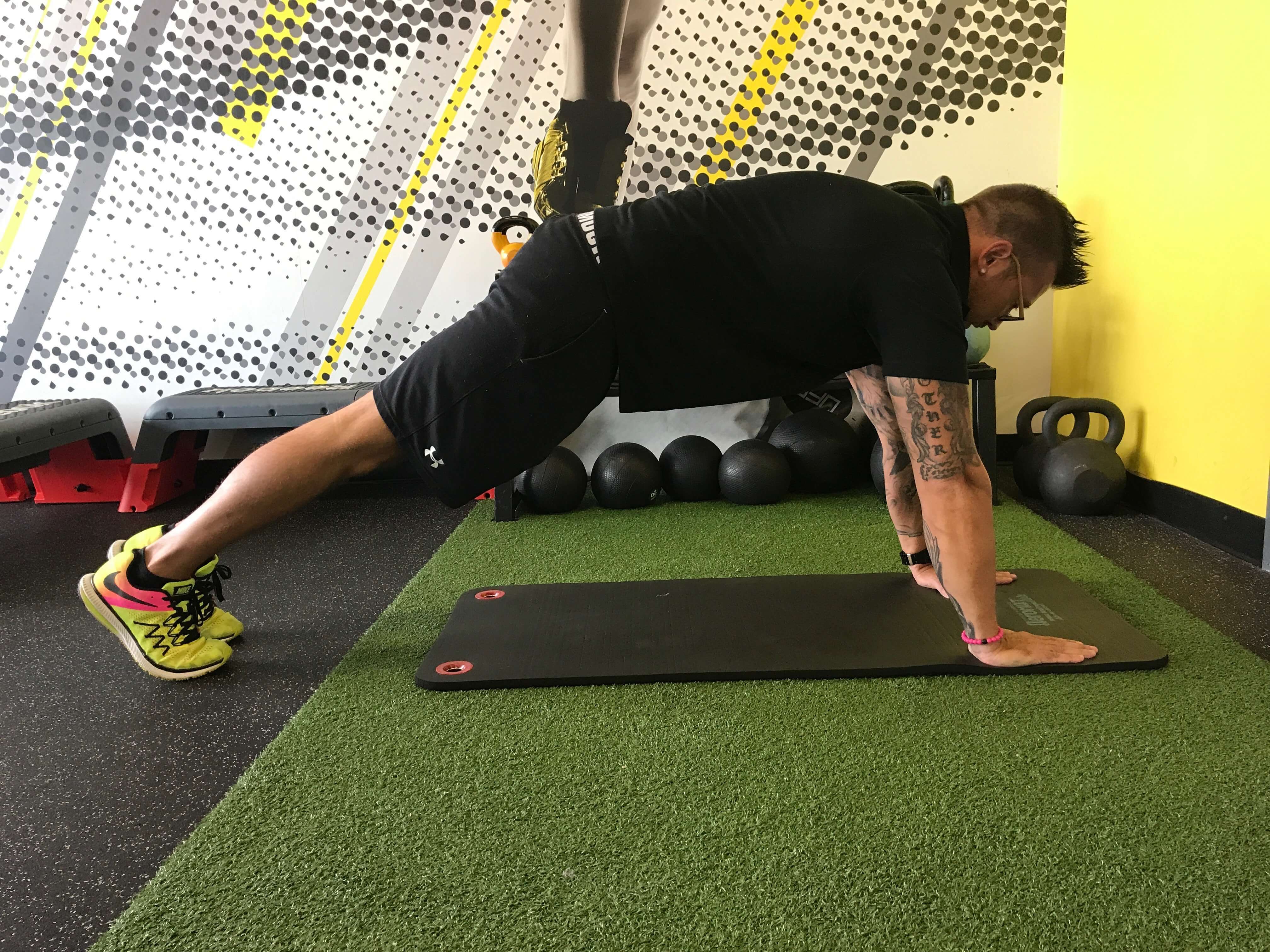
Walking Plank 2
It’s Ok To Stare
The plank when done correctly can help protect your spine, improve posture, and can be performed every day just about anywhere. By engaging your entire body, you create a full body workout in a stationary position. Start with a forearm plank and build up from there. Slowly add the variations and time durations to your new core workout.
Staring at the floor has never been so effective!
It’s time to walk the plank.


